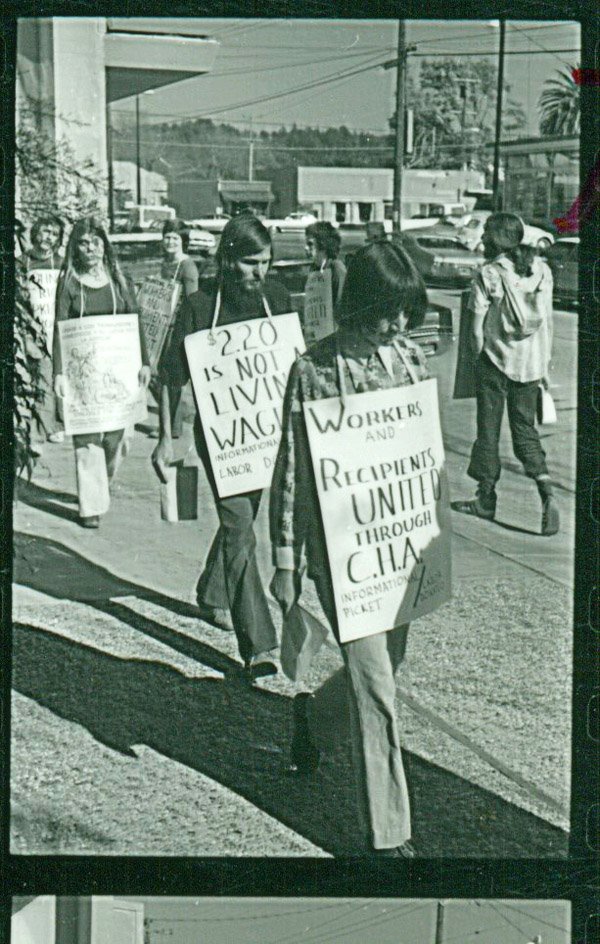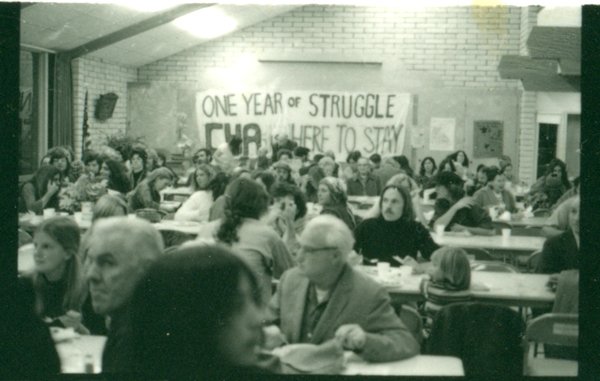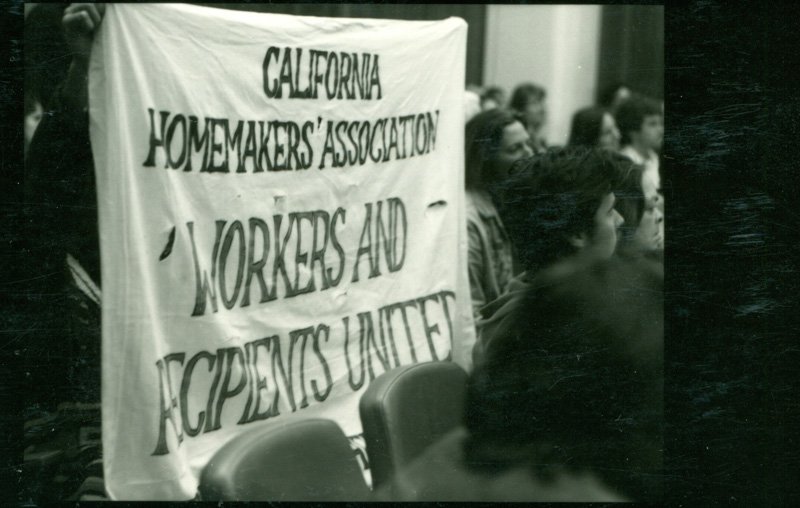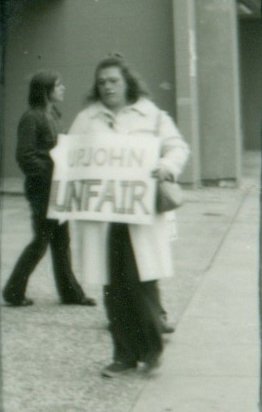WSWA History

Over 50 Years of Victories!








Since our founding in 1974, Western Service Workers Association (WSWA) has signed up over 40,000 service workers and other low-income workers throughout the Central Coast. Only through building strong organization can we gain control over our living and working conditions and reverse the policies that are killing and disabling low-income workers and their families.
WSWA’s uniquely successful method of Systemic Organizing enables anyone who dares to care and is willing to work to build an organization that unites low-income workers with students, professionals, small business owners, the faith community and others concerned and affected by the economic problems we face.
These are just a few of the victories WSWA accomplished during its first 50 years! There is so much more….To get involved call WSWA (831) 429-6016.
Read the story of Elsie Mae Aguila, a leading WSWA organizer.
October 1974 — Attendant care workers employed under a county administered, state-run program, then called the “Homemaker/Chore” and now known as In-Home Supportive Services (IHSS) program, establish California Homemakers Association (CHA) as a sub-committee of WSWA, to organize the attendant care workers and recipients of their care.
October 1, 1975 to June 10, 1977 — WSWA organizes an informational picket line followed by a class-action lawsuit against both Homemakers Upjohn Co. and the Santa Cruz County Board of Supervisors for medical negligence and abandonment and bodily harm of IHSS recipients of care. As a result, WSWA won a historic victory. Homemakers Upjohn had to disclose recipients’ complaints of negligence and abandonment each time they submitted a bid to contract to provide government services, effectively blocking Homemakers Upjohn’s ability to seek government contracts for social services. Wages for In-Home Supportive Services (IHSS) workers increased from $2.25 to $3.25 an hour, the highest in the state at the time.
January 1982 and March 1983 — WSWA leads massive disaster relief efforts in response to devastating storms, rains and flooding.
1983 — WSWA campaigns to release hospital funds under provision of the Hill-Burton, a federal law that allocated. This allocated tax dollars to private and public hospitals to expand their facilities in the wake of World War II. Hospitals were required to pay back the public in the form of free or below cost hospital services for those who could not afford it. WSWA advocates free up millions of dollars worth of care for patients who could not afford to pay at Watsonville Community Hospital and Emeline Clinic.
September 1986 — WSWA members support striking Watsonville cannery workers. Many of the striking workers became members participating in WSWA’s supplemental food distributions and volunteers filled requests for advocacy to expunge medical bills workers received during the 18 month strike.
October 17, 1989 — In response to the devastating 7.1 magnitude Loma Prieta earthquake that rocked the Central Coast, WSWA became the largest independent, all-volunteer disaster relief effort in the area. At the time it was the largest earthquake in the continental U.S. since 1906. The office of WSWA at the time on Airport Blvd. in Watsonville was less than 10 miles from the epicenter of the quake. As hundreds of disaster victims found themselves turned away from FEMA and other official disaster agencies, WSWA volunteers distributed food, clothing, tents, and literally truckloads of other supplies every day with hundreds of volunteers and participation of people who themselves had been victims of the disaster who in turn assisted other disaster victims. WSWA sent out repair and renovation teams to help homeowners who otherwise couldn’t afford replacement for damage. Volunteer medical professionals set up a medical tent where volunteer physicians were treating benefit recipients 18 hours a day, 7 days per week. Church groups, service clubs, students, small business people volunteered around the clock. Our disaster relief units continued daily operations until April of 1990. We stayed long past the media fanfare and broken promises of official agencies and continued to fight for long-term economic recovery and advocacy to demand that FEMA and other official agencies do their job.
May 1992 — WSWA Advisory Committee member Lita Cluster organizes WSWA members on Errington Road in Watsonville to prevent evictions until tenants can find new homes.
January 1994 — In solidarity, Santa Cruz County Workers Benefit Council (WBC) organizes three caravans of volunteers and relief shipments to WSWA Orange County after the Northridge Earthquake
1993 to 1994 — WSWA fights Enterprise Zone legislation. Six separate trips to Sacramento culminating in a two-week stay at the end of the legislative session results in stopping the 32 new Enterprise Zones across the State. The campaign included informational picket lines and a letter writing campaign.
April 1995 — WSWA mobilizes disaster relief after the Pajaro River levee breaches and causes flooding in Pajaro.
1996 to 2005 — WSWA volunteers joined independent farm worker organizing drives to unite migrant farm workers to oppose the State of California’s illegal doubling of rents at state-run Office of Migrant Services Centers housing farm worker families. WSWA volunteers conducted Operation Camp Crew visits to Buena Vista Migrant Center in Watsonville, Hollister Migrant Housing Center in San Benito County, Atwater Migrant Center and Merced Migrant Center in Merced County, Gilroy Migrant Center in Santa Clara County and King City in Monterey County. WSWA led mobilizations to the state capitol and state courts that resulted in the court ruling that the state had to return the $1.2 million in overcharged rent to the farm worker residents. Following the judgment, WSWA organized and led the campaign to locate the workers and assist them in getting the stolen funds refunded.
1996 to 1998 — Santa Cruz City Council approves Beach Flats re-development, destroying low-income housing to develop high-end housing to benefit wealthy investors. WSWA members and volunteers held an informational picket line as part of a community outreach campaign, culminating in 800 residents mobilizing to the Santa Cruz City Council to oppose the redevelopment scheme and won. Low-income residents stayed in Beach Flats, and the city built new low-income housing.
December 2003 — WSWA backs residents of the Clear View Court Mobile Home Park to create the Committee for Just Housing. The Committee wins rent control status at mobile homes in Santa Cruz County.
2011 to 2013 — The Santa Cruz County Workers Benefit Council (WBC) mobilized members, business owners and clergy to testify before a series of public hearings at the California Public Utilities Commission (CPUC), staving off multi-billion dollar PG&E rate increases.
2013 — Santa Cruz County Workers Benefit Council (WBC) mobilized to testify at the State Senate Budget Sub-Committee on Health and Human Services halting a 20% funding cut in the IHSS budget
2014 — Santa Cruz County Workers Benefit Council (WBC) mobilized to the state capitol and won a victory for workers and recipients of In-Home Supportive Services (IHSS) when the State legislature voted to allocate $300 million to fund overtime pay that year. This decision was a statewide victory for California’s 464,000 recipients and 350,000 caregivers.
2018 — The state notified residents of their plan to cut housing for residents by two months at all 21 state run migrant centers. WSWA volunteers and members and the residents themselves stopped this action through their organizing.
December 2022 and January 2023 — WSWA volunteers and members mobilized to deal with flooding affecting the Central Coast, launching membership phone trees, reaching around 700 members to notify them of areas that were being evacuated and where they could get sandbags and other essential supplies. WSWA volunteers immediately sprang into action to fill benefits requested by members.
March 10, 2023 — The Pajaro River levee failed, forcing 3,500 residents to evacuate the town of Pajaro. Members began calling office central at 1 am in urgent need of transportation, shelter, and emergency supplies. Volunteers and members organized daily distributions of supplies needed at the Main Street Bridge in Watsonville leading into Pajaro and then established a benefit office at the Habitat for Humanity at 555 Main St., one half mile from Pajaro. Santa Cruz County Workers Benefit Council (WBC) added a new benefit: volunteer cleanup crews to muck out the mud inside and underneath homes to remove the toxic mud from the flood waters contaminated with pesticides, oil and raw sewage.


